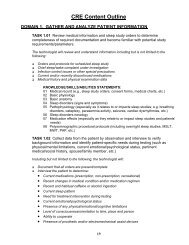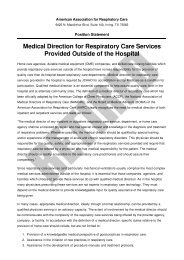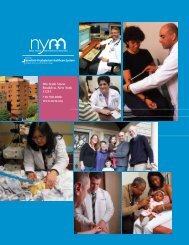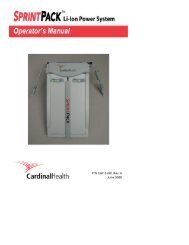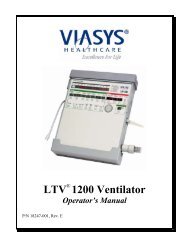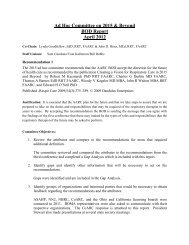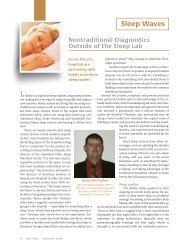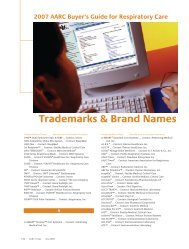Aerosol Guide - AARC.org
Aerosol Guide - AARC.org
Aerosol Guide - AARC.org
Create successful ePaper yourself
Turn your PDF publications into a flip-book with our unique Google optimized e-Paper software.
Hazards of <strong>Aerosol</strong> Therapy<br />
Hazards associated with aerosol drug therapy may occur as a result of inhaled medication,<br />
an aerosol generator being used, the aerosol administration technique, and the environment.<br />
Hazards of aerosol therapy can impact the patient receiving therapy, as well as care providers<br />
and bystanders.<br />
Hazards for Patients<br />
Adverse Reaction: Most hazards associated with aerosol therapy are attributed to adverse<br />
reactions to the drug being used. Therefore, inhaled medications should be administered<br />
with caution. Types of adverse reactions include headache, insomnia, and nervousness with<br />
adrenergic agents, local topical effects with anticholinergics, and systemic/local effects of<br />
corticosteroids. 12,13 If any of these adverse reactions are seen during aerosol drug therapy, the<br />
treatment should be ended and the physician should be notified.<br />
Bronchospasm: Administering a cold and high-density aerosol may induce bronchospasm<br />
in patients with asthma or other respiratory diseases. 13-15 If bronchospasm occurs during<br />
aerosol therapy, the therapy should be immediately discontinued for 15-20 minutes. If it<br />
persists, the physician should be notified.<br />
Drug Concentration: In both jet and ultrasonic nebulizers, drug concentration may<br />
increase significantly during aerosol therapy. 16-18 An increase in drug concentration may be<br />
due to evaporation, heating, or the inability to efficiently nebulize suspensions. 13,16,18,19 As a<br />
result of changes in drug concentration, the amount of the drug remaining in the nebulizer<br />
at the end of aerosol therapy is increased and the patient is exposed to higher concentrations<br />
of inhaled medications. This is a great problem with continuous-feed nebulization.<br />
Infection: It has been well documented that aerosol generators can become contaminated<br />
with bacteria and increase the risk of infection in patients with respiratory diseases. 20-25 The<br />
risk of transmission of an infection is dependent upon duration of exposure of drugs with<br />
pathogens and the procedures taken by respiratory therapists to avoid pathogen exposure.<br />
Proper practices of medication handling, device cleaning, and sterilization can greatly reduce<br />
this risk.<br />
Eye Irritation: Inhaled medications delivered with a face mask may inadvertently deposit<br />
in the eyes and result in eye irritation. Improving the interface between the face mask and<br />
patient may eliminate this problem and increase the amount of drug delivered to the distal<br />
airways. Therefore, caution should be exercised when using a face mask during aerosol drug<br />
administration.<br />
Hazards for Care Providers and Bystanders<br />
Exposure to Secondhand <strong>Aerosol</strong> Drugs: Care providers and bystanders have the risk<br />
of exposure to inhaled medications during routine monitoring and care of patients. While<br />
workplace exposure to aerosol may be detectable in the plasma, 26 it may also increase the<br />
risk of asthma-like symptoms and cause occupational asthma. 27-29 The development and<br />
implementation of an occupational health and safety policy in respiratory therapy departments<br />
can minimize exposure to secondhand aerosol drugs.<br />
6 American Association for Respiratory Care A <strong>Guide</strong> to <strong>Aerosol</strong> Delivery Devices for Respiratory Therapists, 3rd Edition © 2013



